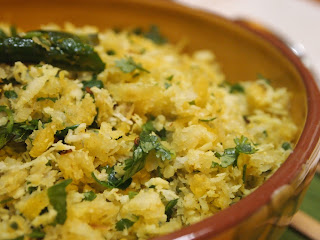A road map for a vegetarian Thanksgiving. The entire essay is up at The Aerogram, including a recipe for Cranberry Pickle.
One of the best memories of all our years celebrating Thanksgiving is the year we realized that the holiday had less to do with exactly what form the dinner took and more with getting to spend time with family and friends. It seems like a simple idea, but it was counter-intuitive to imagine Thanksgiving without turkey or beans or cranberry sauce. The menu at our house that year read like one for an Indian festival with a vegetarian spread, complete with an array of condiments.
If you’re contemplating vegetarian dishes for upcoming holiday feasts and love South Indian food, this roundup of recipes offers suggestions for dishes to include in your plans. Go forth and try your hand at one or two! Or if you’re feeling adventurous, supplement every section of your holiday feast with the help of these dishes. While some Indian recipes can be complicated and take hours to make, that’s not the story with most Indian home cooking, particularly vegetarian cooking.





















